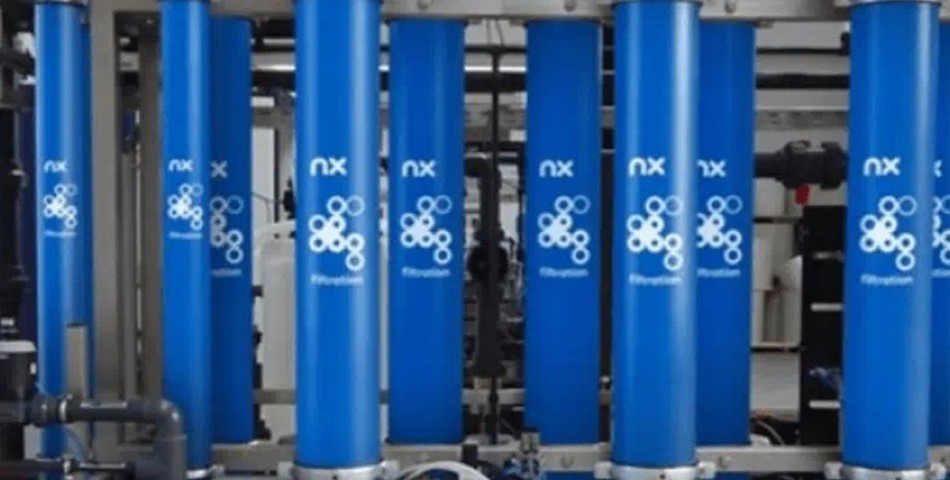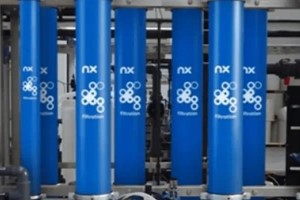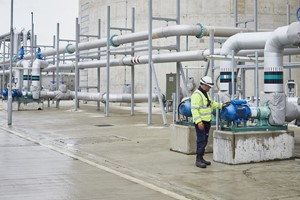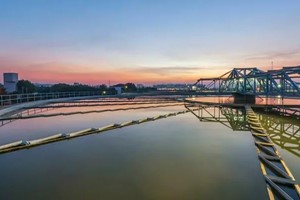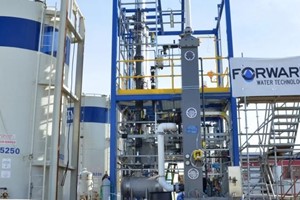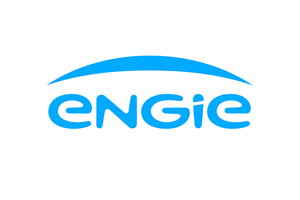KWR Water Research Institute has conducted a full-scale test of direct nanofiltration PFAS retention membranes from NX Filtration.
Membranes to play a critical role
KWR Water Research Institute has conducted a full-scale test of direct nanofiltration (dNF) PFAS retention membranes from Dutch company, NX Filtration.
Per- and poly fluoroalkyl substances (PFAS), also known as ‘forever chemicals’ are manmade substances used in many industries and products, such as non-stick frying pans.
PFAS are not biodegradable and are often referred to as ‘forever chemicals’, with potential serious effects on the environment and human health.
For the tests, KWR conducted a series of long-term tests with NX Filtration’s dNF membranes on the retention rates of PFAS that are commonly seen in real-life situations.
This was based on tests of both surface water, from the Lekkanaal in the Netherlands, and on biologically treated effluent from a municipal wastewater treatment plant.
The dNF averaged a retention rate of PFAS 95 per cent.
Dr Emile Cornelissen, senior researcher at KWR said: “We believe the membranes can play a significant role in addressing the increasing need to remove PFAS from our water sources and environment."
NX Filtration said the average retention of PFAS20, a group of substances on the EU monitor to be regulated, was 94.7 per cent.
The average retention of PFAS4, a group of substances that Sweden will be using in its legislation, was 94.6 per cent.
On carrying out the full-scale test, KWR said that NX Filtration's dNF40 and dNF80 membranes filtered 99 per cent and 81 per cent of individual PFAS compounds.
Erik Roesink, founder and chief technology officer at NX Filtration, said: "This research by KWR provides a detailed and independent external perspective to our capabilities to retain PFAS.
"Our direct nanofiltration technology is effective in removing micropollutants, including PFAS, with low energy and chemicals consumption compared to alternative technologies.”
Multiple ways to remove PFAS
Nanofiltration is just one solution to remove, and retain PFAS from water.
The tests carried out by KWR are certainly a strong indicator of the technology’s suitability to tackle forever chemicals.
Another method being explored for PFAS removal is carbon filtration or granular activated carbon (GAC). The Orange County Water District (OCWD) in California won an award for what was called the nation’s largest PFAS substances testing programme, including GAC.
Ion exchange (IX) resins are another method, made up of highly porous, polymeric material that is acid, base, and water-insoluble. IX resins are an adsorptive technology where media can be formulated to target specific PFAS compounds.
Supercritical water oxidation involves increasing the temperature and pressure so that it's in a unique state. That enables the breaking of the carbon-fluorine bond, which is the backbone of the PFAS molecules.
NX Filtration on a mission
NX Filtration was founded by Erik Roesink, a professor at the University of Twente, also involved in the development of X-flow’s ultrafiltration (UF) membranes.
The company believes that by providing the performance of nanofiltration, but from ultrafiltration (UF) like hollow fibre membranes, it can save both capital costs and operational costs with a smaller footprint and offer strong sustainability benefits.
The company recently secured land in Hengelo, Netherlands, for a €40 to €45 million high-tech mega factory for nanofiltration membrane production.
https://www.aquatechtrade.com/




